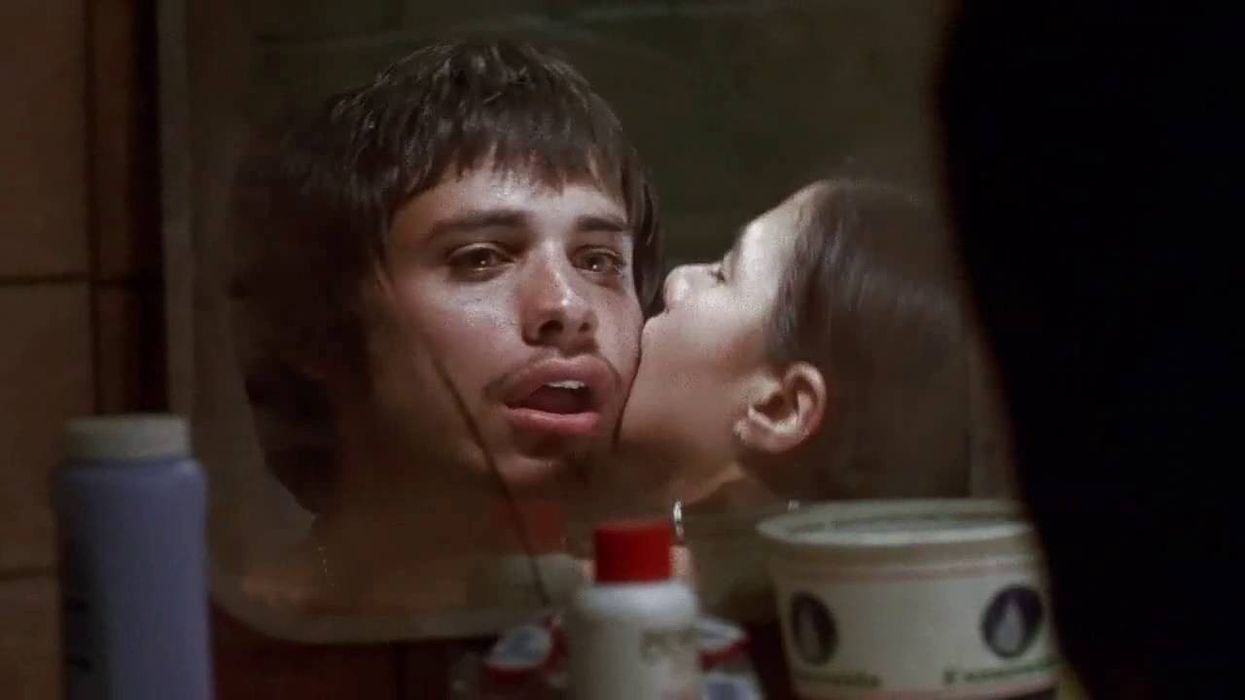How Rodrigo Prieto Became the Go-To Cinematographer of Auteur Directors
Iñárritu. Taymor. Scorsese. There is one trait that they all respect in a DP.

That trait is listening.
Rodrigo Prieto has come a long way from being an outcast cinematographer in Mexico to one of the most sought after DPs in the world, especially when it comes to directors known for a visually distinct style.
Throughout his career, he has created a death scene in infrared for Olive Stone, made a mobile light follow Salma Hayek’s head for Julie Taymor, and translated Scorsese’s ideas without storyboarding into the style of The Irishman. He managed to pick up 3 Oscar nominations and created methodical palettes for Wolf of Wall Street, Argo, Babel, and 21 Grams.
Sitting down in a moderated chat as part of NAB Show Express, viewers got to ask the cinematographer anything. Prieto had a lot to say about his career, memorable shoots, and what it takes to be a good cinematographer. Here are 5 key takeaways from the conversation.

Listening is the best way to bring style to the film
Prieto has worked with directors known for a strong cinematic stamp. How does he blend in his own creativity without imposing on the aesthetic? The answer is simple.
“You are there to support the director’s vision,” he says. “A film is more powerful when it has a uniqueness to it. That comes with a person’s point of view. Ultimately, a director will decide if he or she likes the idea or not. The most important thing is to listen, not just with ears by with your heart. Try to understand on a deeper level what the director is trying to express. Why a certain style, that you think is wrong. Try to see why it could work. Why do they think it should be all red? How to make red work for me and my heart? Obviously I have a taste, but I try to let myself disappear, in a way. My choices come through anyway. You don’t have to push them.”
“A film is more powerful when it has a uniqueness to it. That comes with a person’s point of view."
Directors don’t always know what they want and that’s a good thing
Prieto worked with Scorsese on The Irishman, but he explains that even Scorsese would admit that he doesn't know how they would shoot certain scenes.
“One thing I’ve noticed is, we might think the great directors know exactly what they want, that they have a magical way to be inspired all the time,” explains Prieto. “For me it's very empowering. As a crew member, 'how about this?' is great. I would recommend directors to do that…we are there not just solve problems, but be creative partners.”

Don’t micromanage the lighting crew and operators
Prieto explained that he had changed a lot in how he works with the crew in his department. When he started out in Mexico, he had the same gaffer, but in the U.S., he would not be able to get the same gaffers for every project because of scheduling conflicts. In the process, he learned how to be broader.
“When I started in Mexico, I learned to be very specific. In the U.S., I was that way. I was like I want a 10K right there with this exact gel and diffusion. Now I’ve learned to be more open to ideas and suggestions. I’ve found that great gaffers will find ways to create the same effect more practically or quicker. Time management is an important part of what we do.”
If you take a risk, make sure you test, test, test
The cinematographer is known for his camera and lens tests. Why? It’s not only because he’s attuned to detail. The tests are how he begins to understand the director.
“The key is repetition. To do the exact same shot over and over. Then, you start to understand the director.”
On the set of Alexander, there is a crucial death scene that was shot on infrared. The studio was against it. “I had to sell the idea to everybody, including Oliver,” explains Prieto. “It wasn’t just because it could be cool, but I thought at the moment of near-death, perhaps Alexander would be able to see things more clearly. Maybe you can see infrared light?"
In the end, the studio made him shoot tests with infrared and without, trying to emulate the look of infrared. It didn’t look nearly as good. Stone eventually supported Prieto. The footage on set was shot in regular and IR, and not only did the IR footage look amazing when it was sent to a special lab in London, but the other film negative was accidentally exposed at the airport. That's how we got this iconic shot in cinema history.

Find inspiration within your career limitations
Directors and DPs from Prieto’s generation coming out of Mexico made a huge splash in independent filmmaking. When Prieto started out in Mexico, the environment was not welcoming. As he describes it, studios were not letting in anyone new. And somehow, that’s how he and his fellow creators were able to become unique.
“Studios were tight. No new DPs were shooting anything. The studio DPs were using 1950s lighting…in the 1980s. So in a way, we were all rebelling against the look.”
What qualities do you think are most valuable for DPs to have? Let us know down in the comments.
Header image of Rodrigo Prieto's breakout film as DP, 'Amores Perros' directed by Alejandro González Iñárritu.











